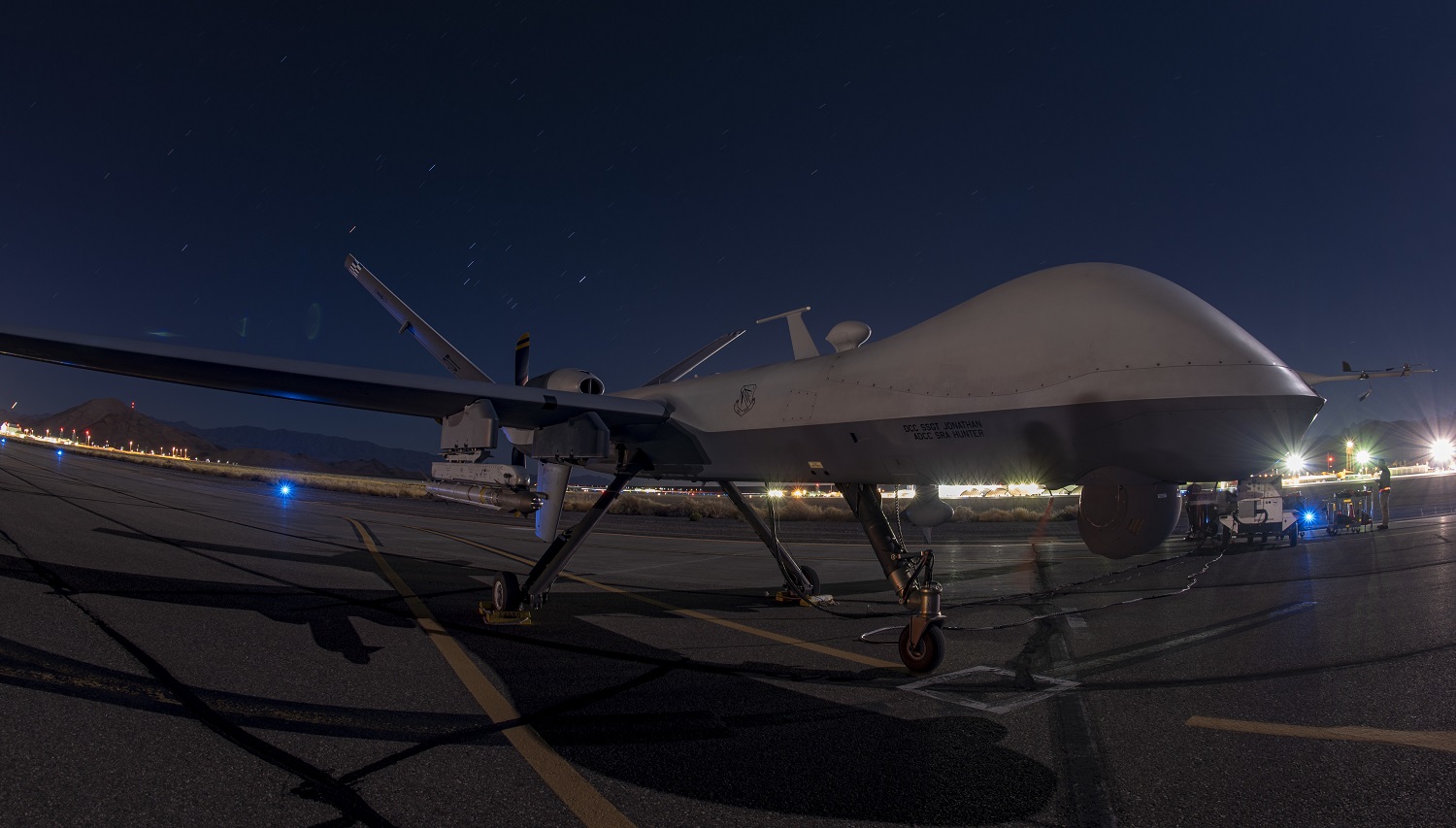From employing an AIM-9X from a MQ-9 Reaper to improving AGR-20 cruise missile defense tactics from the F-16, units across the 53d Wing played a critical role in the Advanced Battle Management System Onramp #2 from August 31 to September 3, 2020. The crew received off-board cueing information, found and tracked the target, then maneuvered to validly employ the AIM-9X against the surrogate cruise missile. A U.S. Air Force MQ-9 Reaper assigned to the 556th Test and Evaluation Squadron successfully employed a live air-to-air AIM-9X Block 2 missile against a target BQM-167 drone simulating a cruise missile.
The 556th Test and Evaluation Squadron, alongside Developmental Test partners, the 26th Weapons Squadron, and industry partners collaborated to plan and execute this event. Joint All Domain Command and Control (JADC2) provided critical data to the MQ-9 and crew for timely and accurate target information.Connecting the squadron operations cell and the ground-based cockpit to the ABMS network to enable the MQ-9 to target the BQM-167 was a significant effort that required resolution to the numerous technical challenges to provide this connection. The network integration proven during the ABMS demonstration significantly decreased the total time from target discovery to engagement to battle damage assessment.

The ABMS demonstration served as the second MQ-9 AIM-9X employment since the first air-to-air shot in November of 2017 against a target drone. Since 2017, the MQ-9 community has investigated and proven the efficacy of the MQ-9 in a counterair role utilizing the AIM-9X and future non-kinetic effects. The combined test, weapons school, and industry team since 2009 has demonstrated the capability to integrate the MQ-9’s effects in major combat operations across a variety of missions during large scale exercises at the USAF weapons school, integrating with Naval assets, and flying in numerous combatant commands.
“This truly was a combined effort to make this demonstration a success,” said Lt. Col. Michael Chmielewski, commander, 556th Test and Evaluation Squadron. “While early in development, this successful test opens the door to further explore integration opportunities the aircraft and cockpits could provide to JADC2, as well as counterair capabilities and roles beyond the typical counter-terrorism role assumed by the MQ-9. This test, and others like it, can shape the future of the MQ-9, as we continue to increase its relevance in great power competition and support the National Defense Strategy. I am extremely proud of the squadron’s efforts to make this a success.”

In addition to the MQ-9 efforts in ABMS, the 422nd Test and Evaluation Squadron also continued the 53d Wing’s work in developing tactics and procedures for missile defense. Working with mission partners, the 422nd TES overcame countless obstacles to plan and execute the first overland Air-to-Air AGR-20A Advanced Precision Kill Weapon System (APKWS) live fire test. The AGR-20A is a fraction of the cost of the AIM-120 missile commonly used for cruise missile defense. Additionally, the AGR-20A can be loaded faster than an AIM-120 and an aircraft can carry two-to-three times the number weapons, directly supporting the National Defense Strategy’s priority of reform the Department for greater performance and affordability.
Through this test in the AMBS Onramp #2, the team generated valuable test data that will be used to work through critical sensor and other limitations that will ultimately move the U.S. Air Force forward in developing this tactic. Furthermore, the 82nd ATRS’s QF-16s played vital roles in other experiments during the Onramp. ABMS is the top modernization priority for the Department of the Air Force with a budget of $3.3 billion over five years and will be the backbone of a network-centric approach in partnership with all the services across the Department of Defense. That broader effort is known as Joint All-Domain Command and Control (JADC2).















